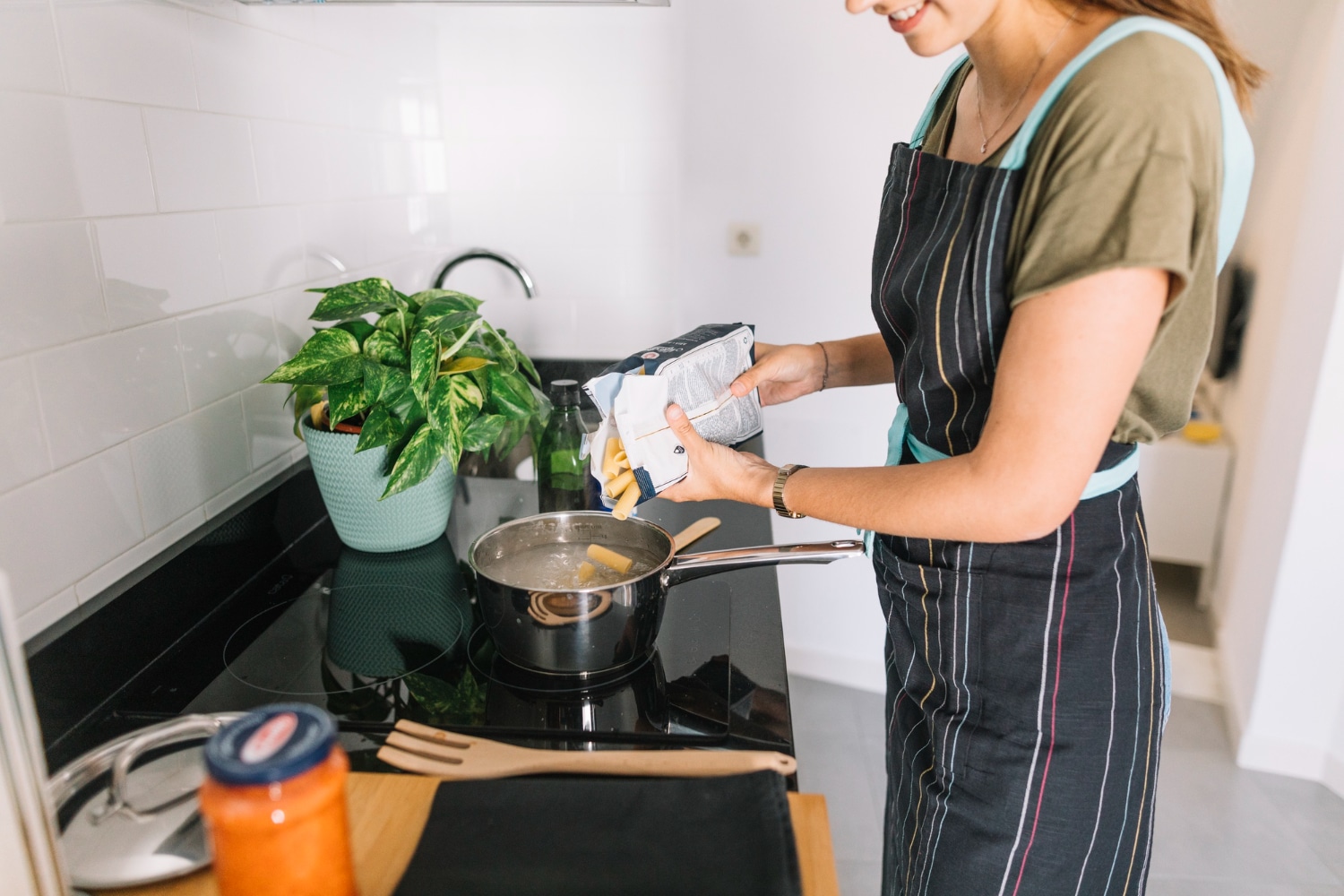Nonstick surfaces are engineered to decrease oils, grease, and other materials permeating material in cuisine. Nonstick cookware allows food to cook through without any chance of sticking. The common coating used for modern cookware is polytetrafluoroethylene (PTFE), the scientific name for Teflon.
Teflon has been a household name for supplying cookware coated with PTFE and is used to this date. Pans coated with this chemical are ensured to have an impervious surface that provides better glide to your saucepan. This peelable coating is economical and can be produced at lower costing cookware.
What Is the Purpose of Teflon Coating in Saucepan?
As a nonstick surface, Teflon coating improves the overall durability and functionality of your standard cookware. A flimsy saucepan without a special coating may turn your sauces into a scorched, bitter coating. This is because Teflon coating is not only a nonstick material; it can also help in distribute and retain heat to your cookware.
A Teflon-coated pan can reduce the chance of producing burnt spots than those without any special coating in the short term. It can also help you “stir” your sauce and liquids without using any wooden spatula. The surface allows liquid to glide smoothly and efficiently, allowing the swirling action to mix the liquid independently.
Teflon coating in a saucepan can also improve the caramelization process on sugar-based sauces. Nonstick coating allows the sugar molecules to distribute evenly—preventing clumps of raw sugar at the top of the pan. This provides better consistency and taste to your sauces and gravy.
Since sauces require lower temperatures to cook, there is a lower possibility of Teflon starting flaking and peeling away from your cooking surface. As soon as the pan starts to flake, discard using your Teflon-coated saucepan.
If you ingested particles accidentally, they could still be released by your digestive tract. However, an exposed saucepan can produce scorched bottoms—which can release carcinogens, a form of toxin that can cause cancer-related symptoms.
Is Teflon Coated Pans Bad for You?
Teflon coating, a form of nonstick surface, is still used on common kitchen utensils like a saucepan. Nonstick pans allow the user to cook with lesser oil, making it a healthier option. Cleaning can be done sufficiently since food particles don’t penetrate, thanks to its waterproof coating. This might sound a nice deal for home cooks—but Teflon coating can impose health risks.
Once ingested, Teflon particles can go inside your body stream. Consuming small flakes of Teflon coating seemed small, but continuous eating can affect your digestive tract. Teflon also has a low smoking point, which means that lower temperatures can turn Teflon coating into toxic fumes. These fumes can create flu-like symptoms, stomach problems, and urinary problems.
When your saucepan is overheated at temperatures beyond 350°C/660°F, PTFE starts to disintegrate—releasing hydrofluoric acid and other organofluorine compounds. This mixture can cause polymer fume fever which can be lethal to birds and humans. This is why PTFE-free surfaces like anodized aluminum, enameled cast iron, silica, and seasoned cookware are produced to prevent such complications.

